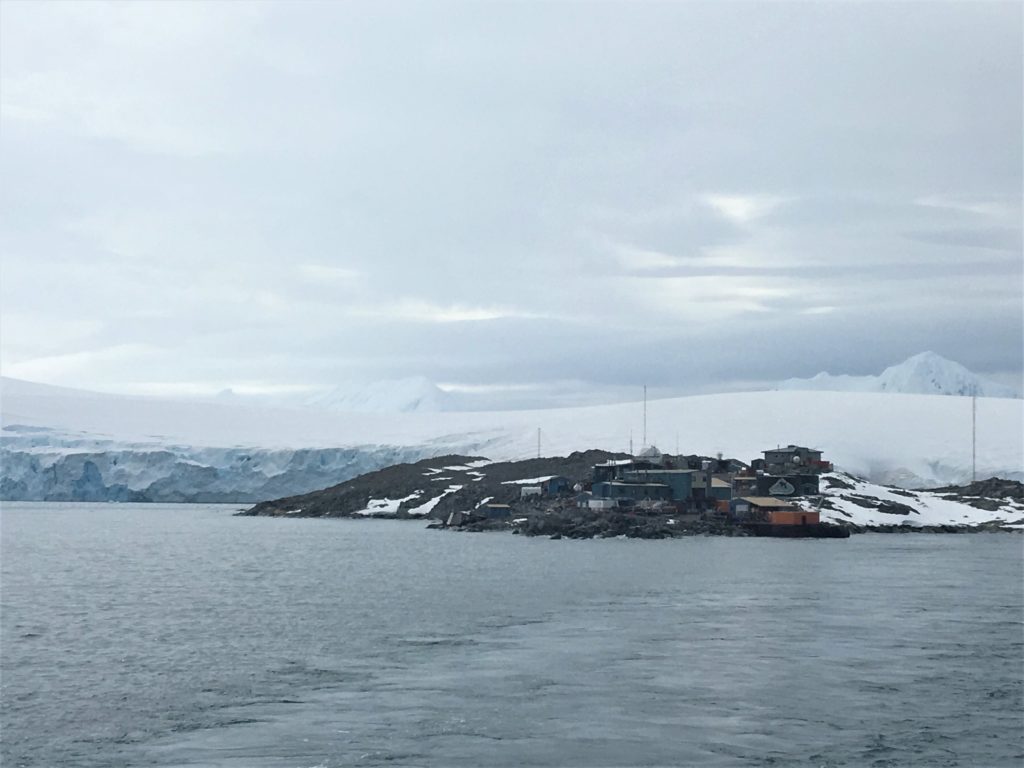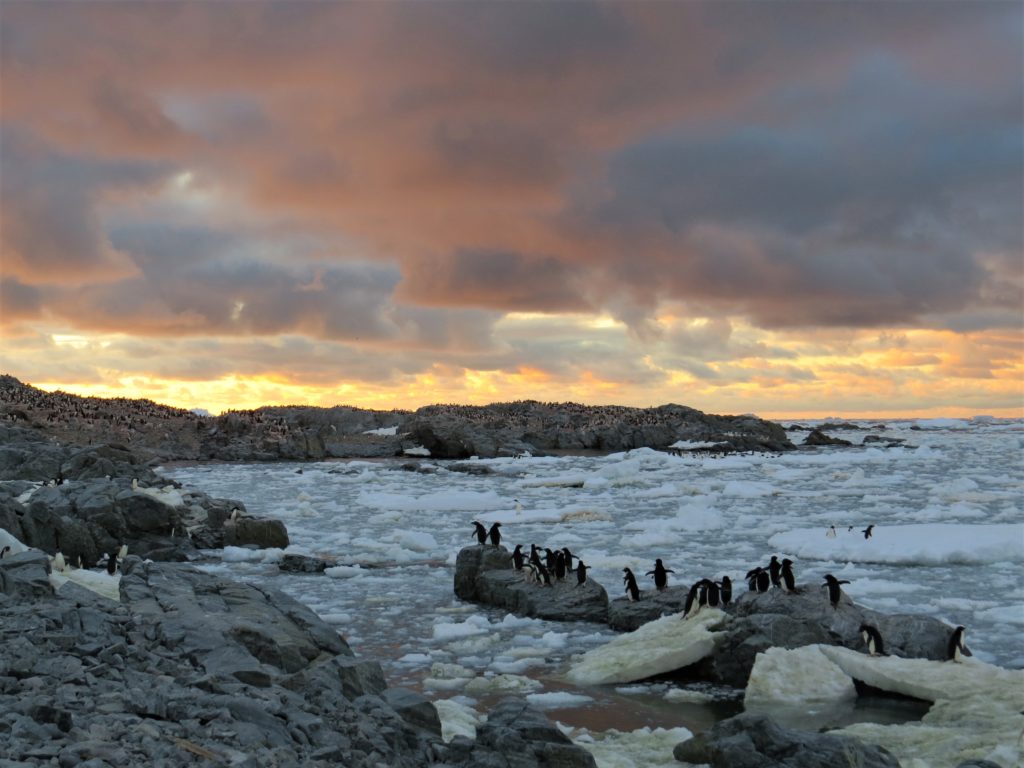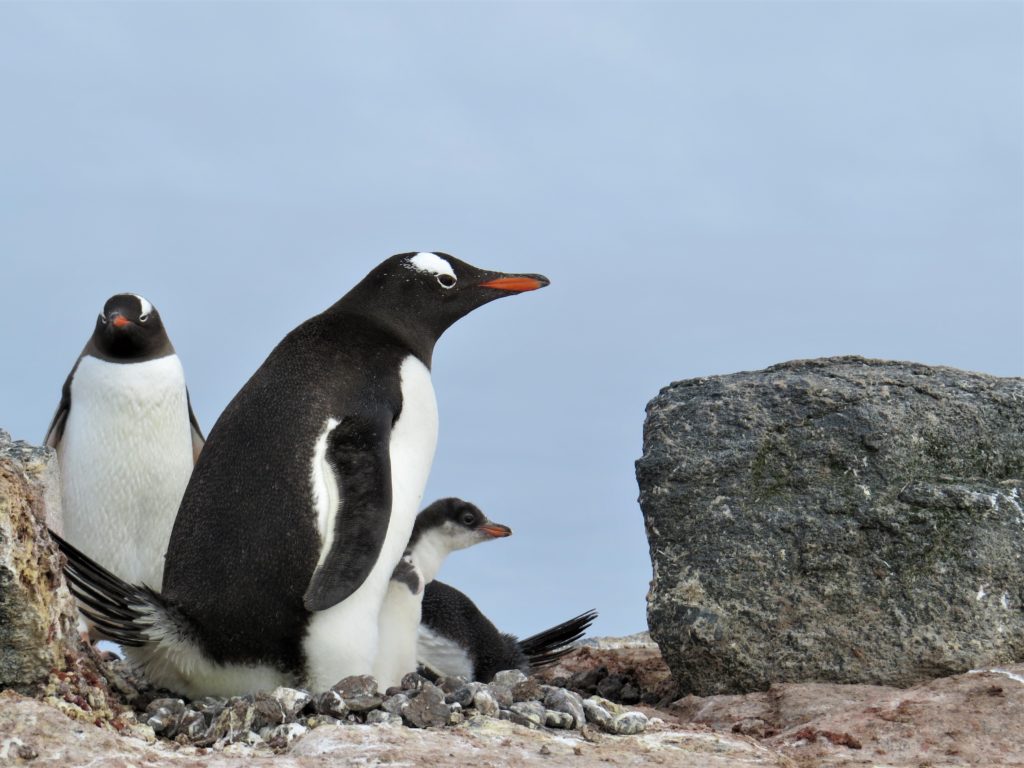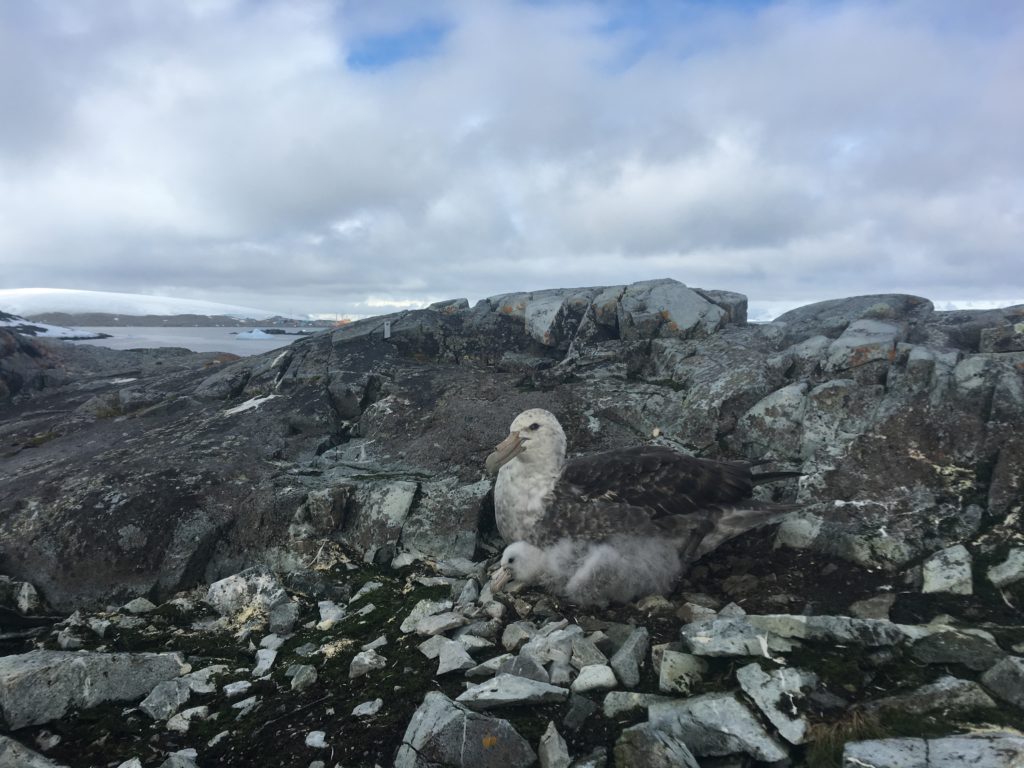Anne to Antarctica 2019

PWSSC Research Assistant to use her bird research skills in the Southern Hemisphere
By Teal Barmore, November 25, 2019
Photos by Anne Schaefer
Prince William Sound Science Center research assistant Anne Schaefer is heading south for her second year working on long-term seabird research projects in Antarctica. This year, in addition to six weeks of at-sea seabird surveys aboard a research vessel, she will be spending a month doing land-based field work at Palmer Station, Antarctica.

Palmer Station, Antarctica.
Palmer Station is located on an island that is surrounded by several other small islands on which colonies of seabirds including three penguin species (Adélie, Chinstrap, and Gentoo), giant petrels, and skuas nest. The research team Anne is joining will work long days, every opportunity that weather and ice conditions allow. On the islands, Anne expects to work long hours, not unlike the week she spent collecting data on Avian Island in Antarctica last year. Some days, Anne said, they would start in the morning and not get done until 11 p.m. or midnight! Luckily, while they are based at Palmer, they have to be back on station by 10 p.m.
Anne is especially excited about this portion of the trip because she will have the opportunity to do more hands-on work with penguins, such as collecting body measurements and deploying tracking tags. This type of work is similar to what she does at the Science Center with Tufted Puffins, gulls, and shorebirds. She will be taking the same types of measurements: flippers (wings), bill length, and body weights. And she will be using the same tools, but the technique is different. “You handle penguins way differently than you do other birds.” Anne says, “they are tough, strong, heavy creatures.”
The data they are collecting is for a variety of long-term monitoring studies led by Dr. William R. Fraser of the Polar Oceans Research Group. The studies vary by species, but they’re all related to abundance, reproduction, and foraging behaviors of seabirds as the climate shifts in Antarctica.

Icebreaker and Antarctic research vessel Laurence M. Gould.
After a month at Palmer station, Anne will be working aboard the 230 foot icebreaker research vessel Laurence M. Gould for four weeks. Her job on the boat is to alternate with one other person to identify and count every bird she sees on survey transects during daylight hours. This is similar to the work Anne has been doing here at the Science Center for the last few years with the Fall and Winter Seabird Abundance Monitoring project. This time though, instead of Common Loons, Red-breasted Mergansers, and Buffleheads she will be seeing albatross, giant petrels and more penguins!
The research cruise follows a very specific grid along the coast of Antarctica known as the Palmer Long Term Ecological Research (LTER) survey site. It is part of the National Science Foundation’s Network of 28 LTER sites around the world—including one in the Northern Gulf of Alaska. Each site measures the same site-specific parameters in the same time frame year after year to provide a long-term public data set. The Palmer LTER site’s survey grid is surveyed every year in January by a variety of researchers studying every level of the ecosystem.
The seabird component is an important part of this whole ecosystem approach because studying marine birds can tell us what is happening under the surface based on where they are distributed and how abundant they are. A seabird survey like the Palmer LTER with a set grid and time frame can give clues into what’s going on with a whole ecosystem as conditions change over time.
This article is an updated and revised version of the feature Anne goes to Antarctica that we did last year. See our full collection of Prince William Sound Science Center news features at pwssc.org/news.

Adélie Penguins at sunset on Avian Island.

Gentoo Penguins adults and chick.

Adélie Penguin chicks on Avian Island.

Adélies at a colony near Palmer Station (Marr Ice Piedmont Glacier in background).

Southern Giant Petrel sitting on a chick.

Adélie Penguins headed out to sea to forage.

Adélies headed back to nests after foraging at sea.

Iceberg seen from the Laurence M. Goulde while on the LTER cruise.

Blue-eyed Shags. One of Anne’s favorite jobs in Antarctica is dissecting the bolus (indigestible material) that these birds spit up. Boli are akin to owl pellets except these are gloppy and oily. She looks for fish otoliths to see what they have been eating.




